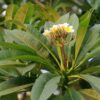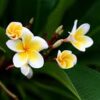**Distinguishing Between Real and Fake Orchids: A Comprehensive Guide**

Orchids, with their exquisite beauty and delicate allure, are highly sought after by enthusiasts and collectors worldwide. However, with the increasing popularity of orchids as decorative plants, the market has seen a rise in counterfeit or artificially enhanced orchids that may deceive unsuspecting buyers. Distinguishing between real and fake orchids can be challenging, but with the right knowledge and attention to detail, it is possible to identify authentic specimens. In this comprehensive guide, we will explore the key characteristics and techniques for distinguishing between real and fake orchids.
**1. Examination of Petals and Sepals:**
One of the first steps in distinguishing between real and fake orchids is to carefully examine the petals and sepals, the outermost parts of the flower. Real orchid petals and sepals typically have a natural texture, with slight variations in color, shape, and size. Look for subtle imperfections such as irregular edges, tiny veins, and gentle curves, which are indicative of authenticity.
Fake orchids, on the other hand, may have unnaturally smooth or shiny petals and sepals, with uniform coloration and texture. They may appear overly perfect and symmetrical, lacking the organic nuances of real flowers. Additionally, fake orchids made from plastic or silk may feel artificial to the touch, whereas real orchids have a softer, more delicate texture.
**2. Examination of Leaves and Stems:**
In addition to inspecting the flowers, it is essential to examine the leaves and stems of orchid plants to determine their authenticity. Real orchid leaves are typically firm and glossy, with a waxy coating that helps retain moisture and protect against dehydration. They may exhibit natural variations in color and texture, with subtle patterns or markings characteristic of the species.
Fake orchids may have leaves that appear dull, flimsy, or unnaturally shiny, lacking the vibrant green color and glossy sheen of real leaves. Look for signs of discoloration, fading, or damage, which may indicate that the leaves are artificial or artificially enhanced. Additionally, real orchid stems are sturdy and flexible, while fake stems may be rigid or brittle.
**3. Examination of Roots and Potting Medium:**
Another important aspect to consider when distinguishing between real and fake orchids is the condition of the roots and potting medium. Real orchids typically have healthy, fleshy roots that are firmly attached to the potting medium, which may consist of bark, sphagnum moss, or specialized orchid mixtures. The roots may be green or white in color, with a plump, succulent appearance.
Fake orchids may have roots that are artificially attached to the potting medium or concealed within the base of the plant. They may appear dry, brittle, or discolored, with little or no evidence of new growth or vitality. Additionally, the potting medium used for fake orchids may be artificial or decorative, lacking the organic composition and texture of real potting mixtures.
**4. Examination of Fragrance and Nectar:**
Many orchid species produce fragrant flowers with distinctive scents that attract pollinators and delight human senses. When examining orchids, take note of any natural fragrance emitted by the flowers, which may vary depending on the species and individual plant. Real orchids often have a subtle, sweet, or floral fragrance that is characteristic of their species.
Fake orchids may lack any scent or may have an artificial fragrance that is overpowering or unpleasant. Additionally, real orchids may produce nectar, a sugary substance that attracts pollinators such as bees, butterflies, and moths. Look for signs of nectar secretion, such as small droplets or stains on the flowers, which may indicate the presence of real orchids.
**5. Consultation with Experts:**
If you are uncertain about the authenticity of an orchid plant, consider consulting with orchid experts, botanists, or horticulturists who can provide guidance and assistance. Experienced orchid enthusiasts and professionals can offer valuable insights and expertise based on their knowledge of orchid species, morphology, and cultivation techniques.
Additionally, reputable orchid nurseries, botanical gardens, and orchid societies may offer educational resources, workshops, and events where you can learn more about orchid identification and care. By seeking advice from knowledgeable sources and continuing to educate yourself about orchids, you can become better equipped to distinguish between real and fake specimens and make informed decisions when purchasing or caring for orchid plants.
In conclusion, distinguishing between real and fake orchids requires careful observation, attention to detail, and knowledge of orchid characteristics. By examining the petals and sepals, leaves and stems, roots and potting medium, fragrance and nectar, and consulting with experts, you can confidently identify authentic orchid specimens and avoid being deceived by counterfeit or artificially enhanced plants. With practice and experience, you can develop a discerning eye for orchids and cultivate a deeper appreciation for these exquisite and enchanting flowers.

